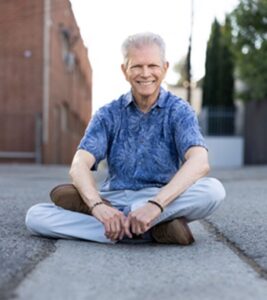The Sacral Chakra is the second chakra and is responsible for our well-being, intuition, awakening our creativity, sexual pleasure, and sensuality. It maintains the healthy functioning of our bladder, kidneys, and reproductive organs. This energy center assists in letting go, accepting change, and self-transformation in life.
The Sacral Chakra governs our hips, inner thighs, and reproductive organs, together with the urinary and circulatory systems.

Location About three inches below the navel
Color: Orange
Element: Water
Short Affirmation – I Feel
Main Functions – Emotional body, sensuality, and creativity
Areas of the Body – Womb, genitals, kidney, bladder
Associated with:
• Emotions, feelings
• Relationships, relating
• Expression of sexuality, sensual pleasure
• Feeling the outer and inner worlds
• Creativity
• Fantasies
The sacral chakra influences your desires, emotions, sensuality, sexuality, pleasure, and the need to create, whether it’s birthing your children or fostering your creative expression in the world.
When this chakra is unbalanced, your life may be controlled by impulsive behaviors, dissatisfaction with sex, relationships with poor boundaries, materialistic attachments, and excessive need to control.
When it’s balanced, you can express your emotions, establish healthy boundaries, experience pleasure, move with grace and fluidity, and adapt to change when needed.
Sacral Chakra Color – Orange
The Sacral Chakra is surrounded by the water element. The color red of the earth element below and the yellow of the fire element above reflect onto the water to create the orange color.

Sacral Chakra Symbol
The symbol of the Sacral Chakra is six petals surrounding the center. The circles and crescent moon represent the cycles of birth, death, and rebirth. The six petals represent 6 negative aspects of our nature that we need to overcome to cleanse and purify this center.
How to Balance the Sacral Chakra
Chakras may be described as underactive or overactive but are never blocked.
There are a variety of practices that can balance your chakras. The goal is always to restore your chakras for overall health and well-being.
Self-Care Practices
• Yoga
• Guided Meditation
• Crystals
• Essential Oils
• Positive Affirmations
Complementary Therapies
• Acupuncture
• Massage
• Reiki
• Crystal Reiki
• Sound Healing
Sacral Chakra Crystals – Orange
Stones: Carnelian, Orange Calcite, and Orange Adventurine
Sacral Chakra Affirmations
Repeat these affirmations for positive vibrations and to bring balance to your sacral chakra.
• I am safe and protected.
• I trust my intuition in every moment.
• I embrace and celebrate my sexuality.
• My body is sacred.
• I am flexible and open to change. • I am creative and passionate.
Book a No-Cost Discovery Session
Your Discovery Session is an opportunity to answer any of your questions and to find out if a Sound Healing Session or a Crystal Reiki Session is the best fit for your overall health.



